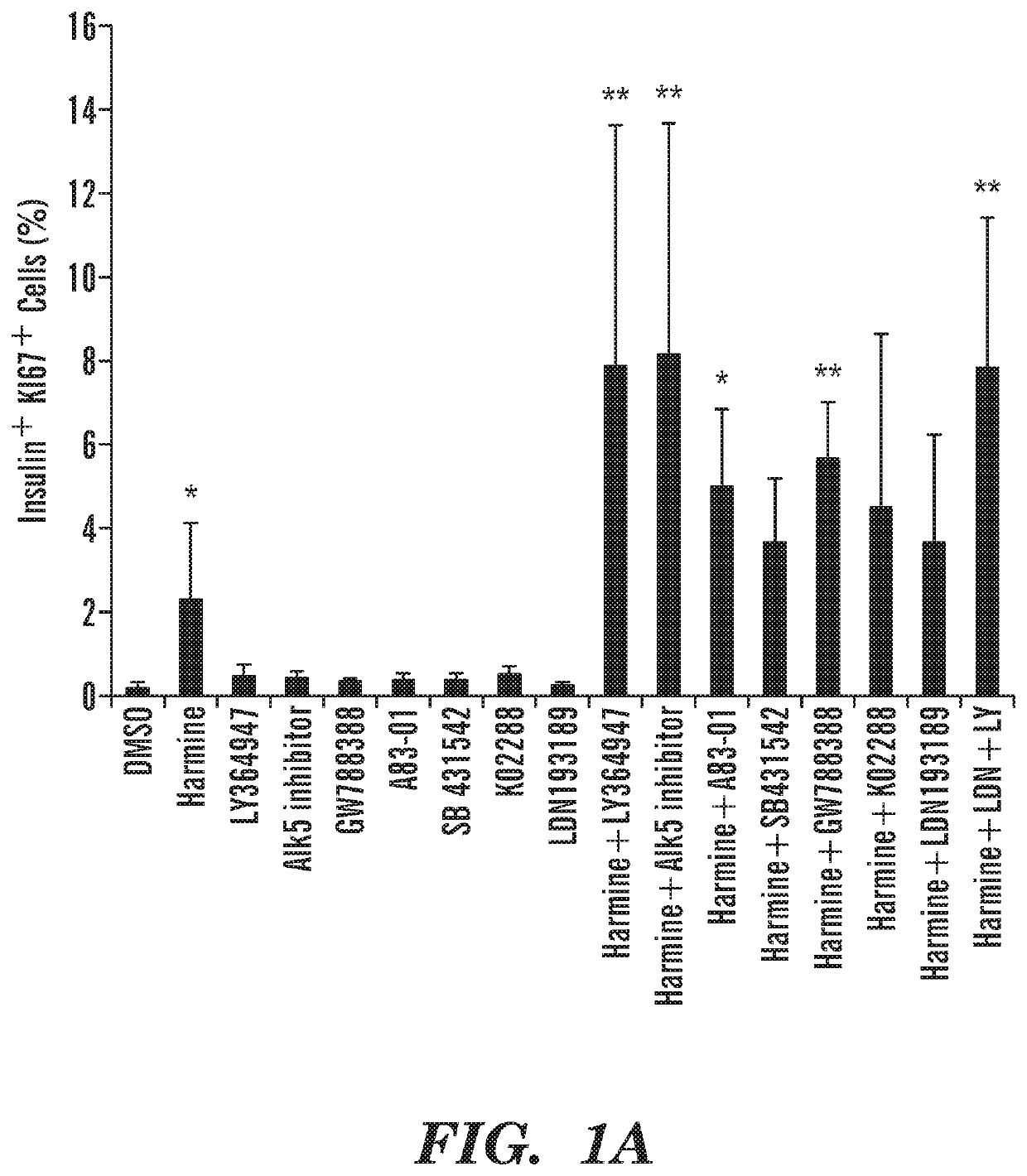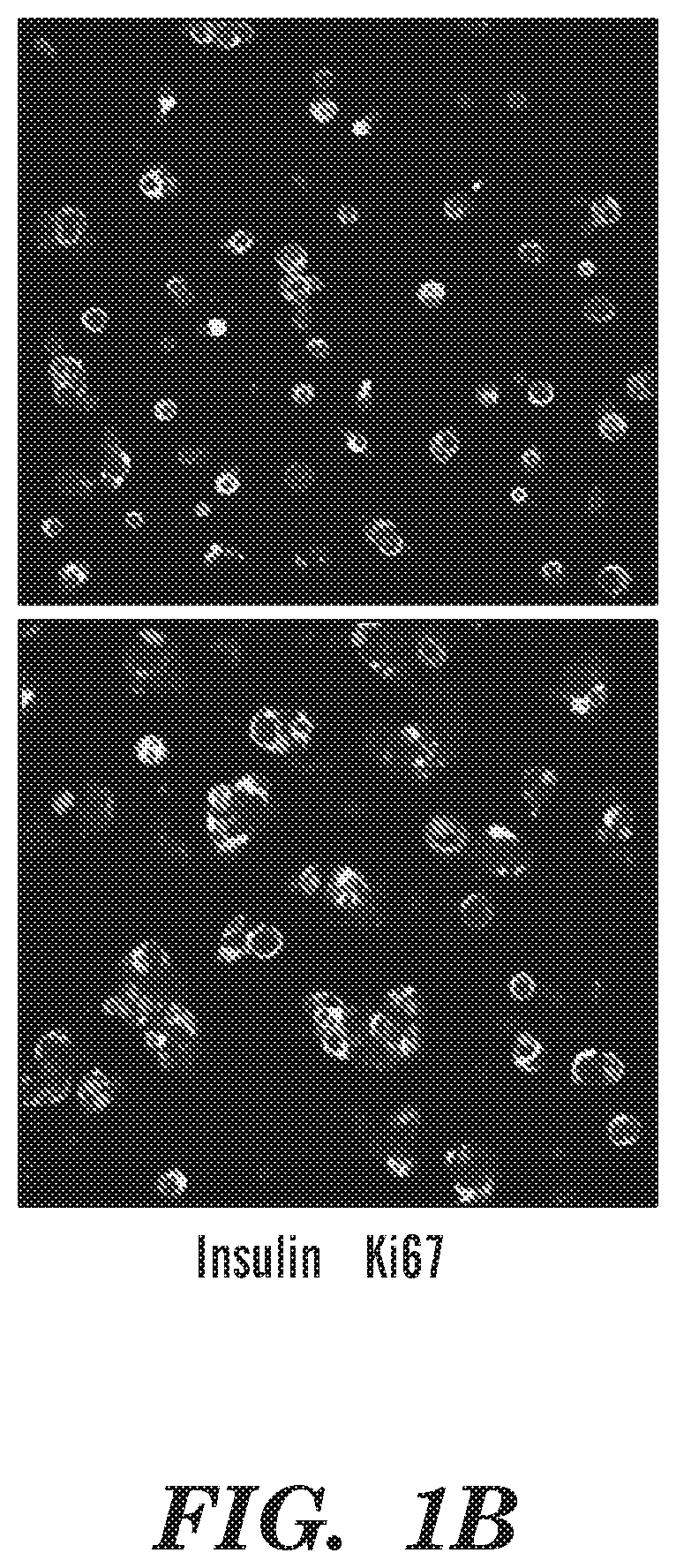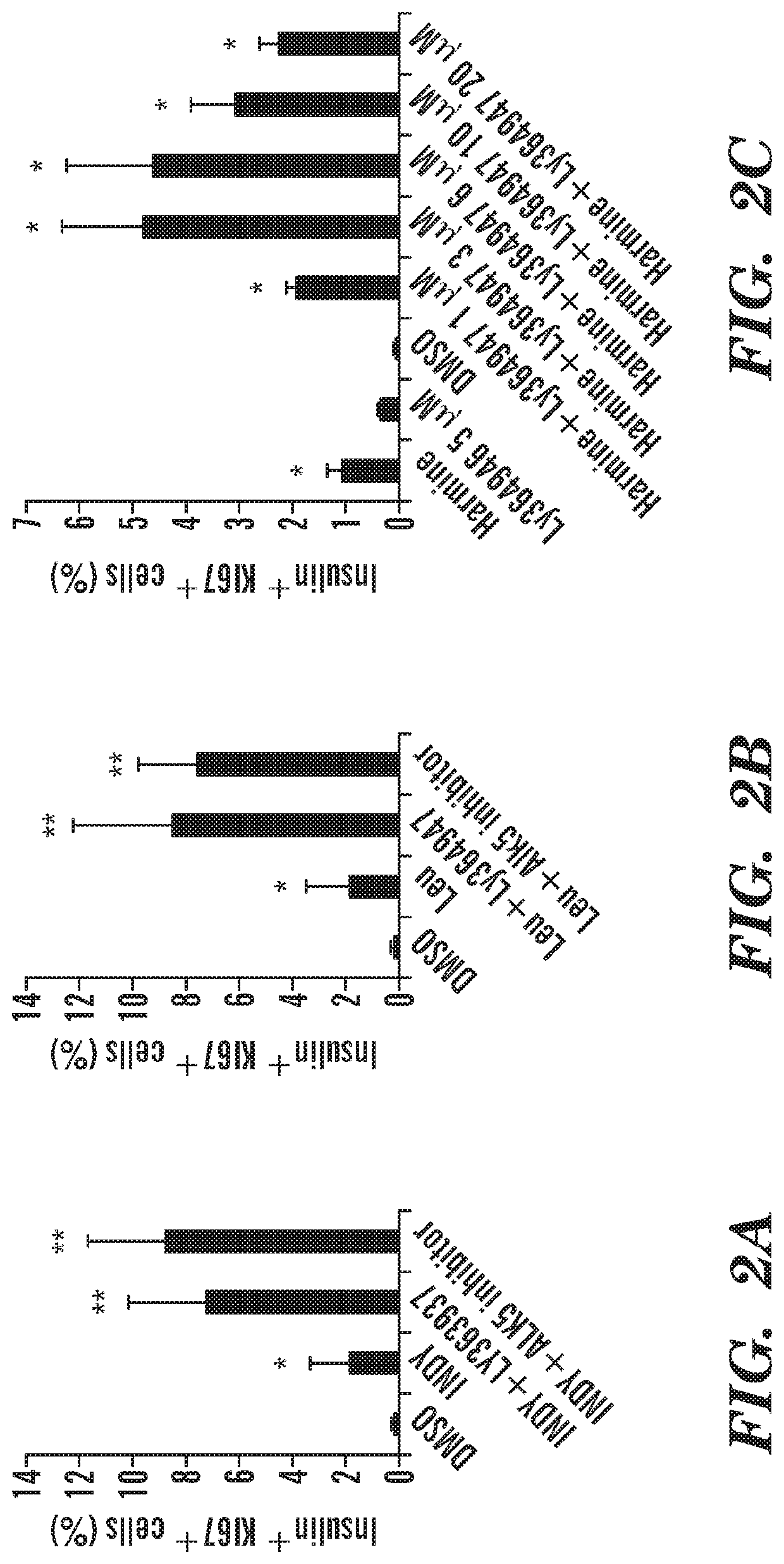Method for increasing cell proliferation in pancreatic beta cells, treatment method, and composition
a pancreatic beta cell and cell proliferation technology, applied in drug compositions, heterocyclic compound active ingredients, metabolic disorders, etc., can solve the problems of clear insufficient practical therapy rate of human beta cell proliferation of 1.5% to 3%, achieve remarkable and previously unattainable “rates” of human beta cell proliferation, and restore adequate insulin secretion
- Summary
- Abstract
- Description
- Claims
- Application Information
AI Technical Summary
Benefits of technology
Problems solved by technology
Method used
Image
Examples
example 1
ons of DYRK1A Inhibitors and TGFβSF Inhibitors Induce Unprecedented and Synergistic Human Beta Cell Proliferation
[0116]Gene expression profiles from FACS-sorted human beta cells (Wang et al., “Wang et al., “Insights Into Beta Cell Regeneration for Diabetes Via Integration of Molecular Landscapes in Human Insulinomas,”Nature Communications, 8:767 (2017), which is hereby incorporated by reference in its entirety), summarized in Table 2, were remarkable for the abundance of members of the TGFβSF. In addition, harmine treatment of human islets resulted in notable changes in TGFβSF members (Table 3). Reasoning from these observations, from the prominence of SMAD signaling in human insulinoma cell proliferation (Wang et al., “Insights Into Beta Cell Regeneration for Diabetes Via Integration of Molecular Landscapes in Human Insulinomas,”Nature Communications, 8:767 (2017), which is hereby incorporated by reference in its entirety), and the beneficial effects of TGFβ signaling inhibition de...
example 2
GKβSF Combinations Enhance Markers of Human Beta Cell Differentiation in Normal and Type 2 Diabetes Islets
[0119]Concerned that activation of mitogenic pathways might lead to de-differentiation of beta cells, gene expression of a panel of markers of beta cell differentiation was explored (FIGS. 4A-4B). As observed for harmine alone (Wang et al., “A High-Throughput Chemical Screen Reveals That Harmine-Mediated Inhibition of DYRK1A Increases Human Pancreatic Beta Cell Replication,”Nature Medicine 21:383-388 (2015), which is hereby incorporated by reference in its entirety), the harmine-TGFβSF inhibitor combination not only failed to induce de-differentiation, the opposite occurred: gene expression of key beta cell markers such as INS (insulin), PDX1, NKX6.1, MAFA, MAFB, SLC2A2, and PCSK1(FIGS. 4A-4B) all increased with combined harmine-TGFβSF inhibitor treatment, as assessed on whole islets by qPCR. Gene expression of ISL1, SLC2A1, NeuroD, NKX2.2, and PCSK2 all remained the same as at ...
example 3
Efficacy Requires SMAD and DYRK1A Signaling
[0121]TGFβSF ligands affect SMAD signaling but may also recruit other signaling pathways (Brown and Schneyer, “Emerging Roles for the TGFb Superfamily in Pancreatic Beta Cell Homeostasis,”Trends Endocrinol. Metab. 21:441-448 (2010); Stewart et al., “Human Beta Cell Proliferation and Intracellular Signaling: Part 3,” Diabetes 54:1872-85 (2015); Macias et al., “Structural Determinants of Smad Function in TGF-Beta Signaling,”Trends Biochem. Sci. 40:296-308 (2015); and Gaarenstroom & Hill, “TGF-Beta Signaling to Chromatin: How Smads Regulate Transcription,”Seminars Cell Devel. Biol. 32:107-118 (2014), which are hereby incorporated by reference in their entirety). To ascertain whether the harmine-TGFβSF inhibitor combination affected SMAD signaling, human islets were incubated with harmine alone or in combination with two TGFβSF inhibitors: LY or ALK5 (FIG. 5A). The harmine-TGFβSF inhibitor combinations led to reductions in SMAD3 phosphorylation...
PUM
| Property | Measurement | Unit |
|---|---|---|
| composition | aaaaa | aaaaa |
| mass | aaaaa | aaaaa |
| resistance | aaaaa | aaaaa |
Abstract
Description
Claims
Application Information
 Login to View More
Login to View More - R&D
- Intellectual Property
- Life Sciences
- Materials
- Tech Scout
- Unparalleled Data Quality
- Higher Quality Content
- 60% Fewer Hallucinations
Browse by: Latest US Patents, China's latest patents, Technical Efficacy Thesaurus, Application Domain, Technology Topic, Popular Technical Reports.
© 2025 PatSnap. All rights reserved.Legal|Privacy policy|Modern Slavery Act Transparency Statement|Sitemap|About US| Contact US: help@patsnap.com



